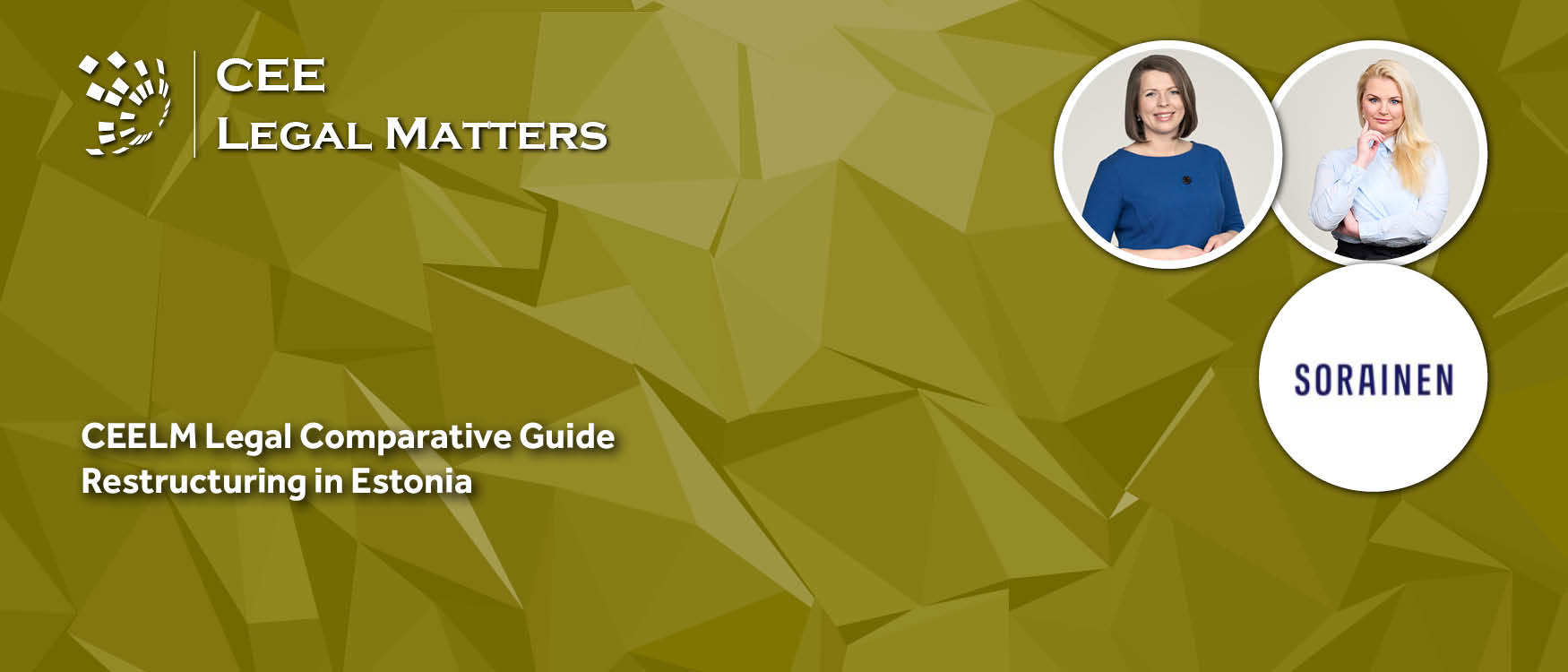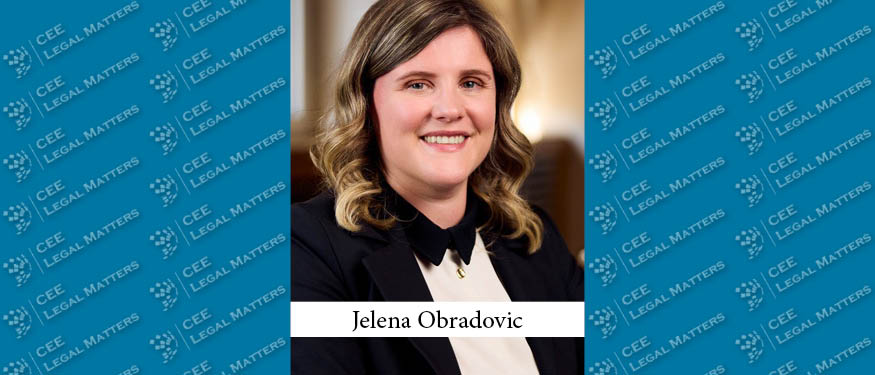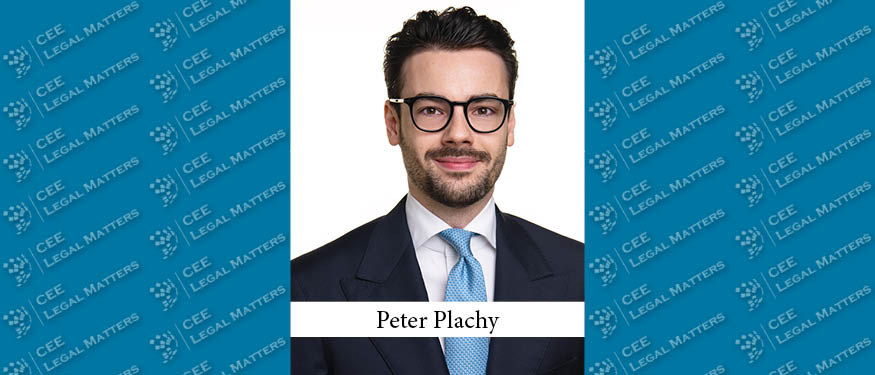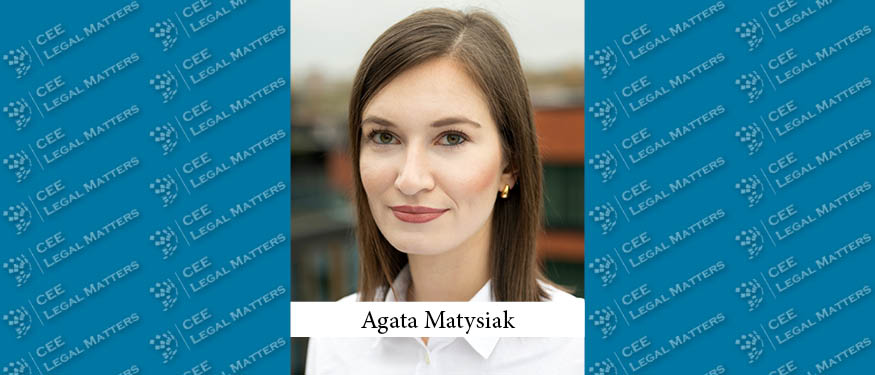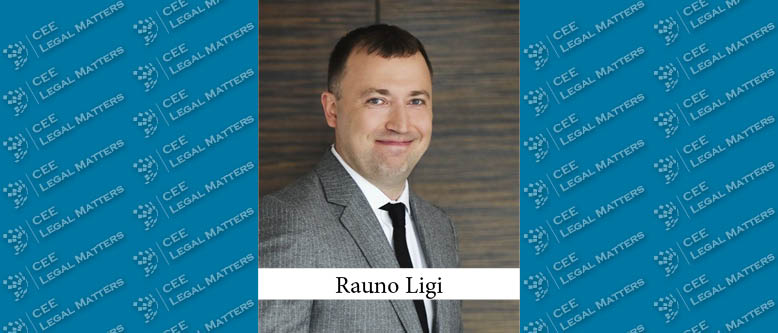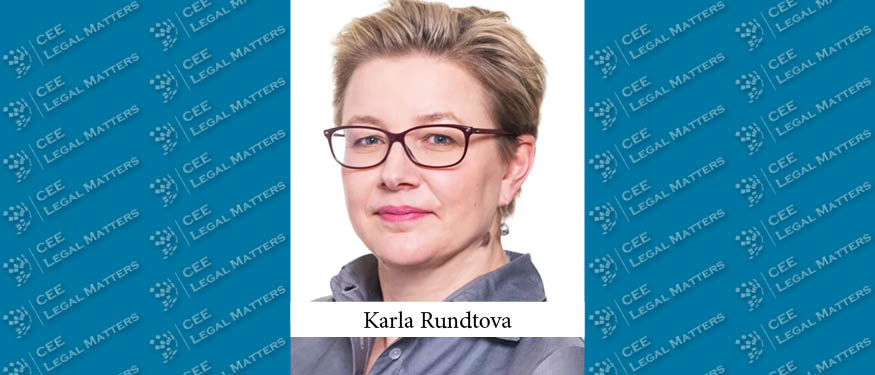Contributed by Sorainen.
1. Overview
1.1. What domestic pieces of legislation and international instruments apply to restructuring and insolvency matters in your jurisdiction?
In Estonia, insolvency matters are regulated in the Bankruptcy Act (pankrotiseadus, PankrS) and the Insolvency of a Natural Person Act (FiMS). Restructuring is regulated by the Reorganization Act (saneerimisseadus, SanS).
As Estonia is a member of the European Union, Regulation (EU) 2015/848 of the European Parliament and of the Council of May 20, 2015, on insolvency proceedings (recast) applies, covering both bankruptcy and restructuring proceedings in cross-border insolvency cases.
1.2. Do you have a well-established legal regime governing restructuring and insolvency, or do you have rather frequent legislative changes in the area?
Estonian insolvency law has recently been thoroughly revised. The first phase of the revision was mostly finalized at the beginning of 2021, comprising mainly of changes in the Bankruptcy Act. The second and final phase was completed in July 2022, by which substantive changes to restructuring proceedings, debt restructuring proceedings, insolvency proceedings of natural persons, and discharge of debt were made.
Relatively frequent and mainly case-law-based smaller changes in Estonian legislation concerning insolvency and restructuring occur.
1.3. Are there any special regimes applying to specific sectors?
Special insolvency regimes apply regarding highly regulated entities, for example, credit institutions. The corresponding legislation can be found, inter alia, in the Credit Institutions Act (krediidiasutuste seadus, KAS), Creditors and Credit Intermediaries Act (krediidiandjate ja -vahendajate seadus, KAVS) and Covered Bonds Act (pandikirjaseadus, PandiKS).
1.4. Were any changes to restructuring or insolvency laws adopted in response to the COVID-19 pandemic? If so, what were they?
Both the Bankruptcy Act and the Reorganization Act were amended in response to the COVID-19 pandemic.
Section 193/2 of the Bankruptcy Act suspended the running term of obligation to file a bankruptcy petition beginning from the commencement of the COVID-19-related emergency situation declared by the Government of the Republic of Estonia on March 12, 2020, and ending two months after the termination of the emergency situation on May 17, 2020.
Amendments for the duration of the emergency situation were also made in section 55 of the Reorganization Act, listing options to amend reorganization plans. If it is required and justified in order to achieve the purposes of reorganization, the court was allowed to suspend the payments under the approved reorganization plan for up to three months (with the possibility of extension for another three months) or amend the reorganization plan. An application for such amendment of the reorganization plan was eligible to be filed up until March 31, 2021.
1.5. Are there any proposed or upcoming changes to the restructuring insolvency regime in your country?
As a thorough revision of the Estonian insolvency and restructuring law was recently finalized (see Section 1.2.), there are no additional area-changing amendments planned at this stage (as of the time of submitting this input).
1.6. Has your country adopted or is your country considering the adoption of the UNCITRAL Model Law on Enterprise Group Insolvency?
Estonia has not adopted the UNICITRAL Model Law on Enterprise Group Insolvency. Enterprise group insolvency as a legal instrument does not exist in Estonia. In such cases, Regulation (EU) 2015/848 or the Estonian national law applies, which is based on an entity-based approach. To our understanding, it is unlikely that Estonia would adopt the Model Law in the near future.
2. Insolvency
2.1. Is there an insolvency test that triggers certain obligations for directors or officers of the debtor company? If so, what is the test and what are the consequences for failure to meet these obligations?
Insolvency is defined in section 1 of the Bankruptcy Act. A debtor is considered insolvent under Estonian law if they are unable to satisfy the claim of a creditor that has fallen due and such inability is not temporary due to the debtor’s financial situation. In the case of legal persons, a debtor is also insolvent if the assets of the debtor are insufficient for covering their obligations and such insufficiency is not temporary due to the debtor’s financial situation. In this case, claims that have not yet fallen due are also regarded as obligations.
This means that in order to be insolvent, the debtor must:
1) be unable to satisfy the claim of a creditor that has fallen due (in case of natural and legal persons) or
2) have insufficient assets for covering the debtor’s obligations (only in the case of legal persons) and
3) such inability must not be temporary due to the debtor’s financial situation.
In addition to the Bankruptcy Act, obligations of the directors of the debtor are listed in the Commercial CodeAccording to section 180 (5/1) of the Commercial Code, the management board of a private limited company is obliged to file a bankruptcy petition promptly, but no later than 20 days after the insolvency became evident. This obligation arises if the private limited company is insolvent and the insolvency is not temporary due to the company’s economic situation. Section 306 (3/1) of the Commercial Code states an analogous obligation for the management board of a public limited company.
If the management board fails to file the bankruptcy petition in time, the management board members will be jointly and severally liable for compensation for the damage caused by their inactivity. A member of the management board will not be held liable if they prove that they have performed their actions with due diligence. This is regulated by the Commercial Code. Up until 2015, the failure to submit a petition for bankruptcy was also criminalized under the Penal Code (karistusseadustik, KarS).
In practice, management boards of insolvent companies often fail to file for bankruptcy in time in hopes of the abatement of bankruptcy proceedings. This, however, goes against the interests of the creditors. In order to deter such behavior, the Insolvency Division (to be established in the near future) will be able to commence a public investigation into the actions of the management board and apply a prohibition on business to the management board member(s).
2.2. What types of insolvency procedures are established by law in your jurisdiction?
Three insolvency proceedings, based on whether the debtor is a natural or legal person, are established by Estonian law – bankruptcy proceedings (for both, natural and legal persons), reorganization proceedings (for private legal persons), and debt restructuring proceedings (for natural persons).
2.3. Who has the right to initiate insolvency proceedings?
According to section 9 of the Bankruptcy Act, the debtor or a creditor may file the bankruptcy petition and thus initiate insolvency proceedings. If the debtor is dead, a petition may also be filed by an heir, the executor of the will, or the administrator of the debtor’s estate. However, in cases provided by law, other persons may also be able to file a bankruptcy petition (for example, in certain cases, the Financial Supervision Authority).
2.4. What are the consequences of commencing insolvency proceedings, in particular:
2.4.1. Does management continue to operate the business and/or is the debtor subject to supervision?
Upon the declaration of bankruptcy, a bankruptcy trustee will be appointed. The trustee will take the role of a management board member (the debtor’s assets become the bankruptcy estate, the right to administer the debtor’s assets and the right to be a participant in court proceedings in lieu of the debtor with regard to a dispute relating to the bankruptcy estate or the assets which may be included in the bankruptcy estate is transferred to the trustee, the debtor is deprived of the right to enter into transactions relating to the bankruptcy estate), determining the claims of the creditors, administrating the bankruptcy estate, ascertaining the causes of the insolvency, and organizing the continuation of the debtor if deemed necessary.
2.4.2. Does a moratorium or stay apply and if so, can it have an extraterritorial effect?
Enforcement proceedings end when the debtor is declared bankrupt, and any seizure of the debtor’s assets is terminated with the declaration of bankruptcy (seizure or judicial mortgage of the property of the debtor applied to secure possible confiscation or substitution of confiscation in criminal proceedings shall not terminate with the declaration of bankruptcy). The court may also decide on the continuation of enforcement proceedings in limited and justified cases.
2.4.3. How does it impact the existing contracts (e.g., is the counter-party free to terminate them, can the debtor’s pre-insolvency transactions be challenged)?
The bankruptcy trustee may perform previously unperformed obligations arising from contracts entered into by the debtor. The trustee may also require the other party to perform their contractual obligations or waive the debtor’s contractual obligations. The law provides for some limitations for these rights – for instance, the debtor’s contractual obligations may not be waived if the obligation is secured by an advance notice registered in the land register. If the other party makes a proposal to the trustee to decide on the continuation or termination of a contract, the trustee must give a notice regarding that proposal immediately, but no later than within seven days.
2.5. Which steps do insolvency proceedings normally include and what are the roles of the courts and other key stakeholders (such as debtor, directors of the debtor, shareholders of the debtor, secured creditors, unsecured creditors, etc.)?
The procedure begins with a bankruptcy petition submitted to the court (see Section 2.3.). The court may then accept or refuse the petition on the grounds listed in section 14 (1) of the Bankruptcy Act.
If the court accepts the bankruptcy petition, it will then have 10 days to decide on the appointment of an interim trustee and make a ruling on the decision. The court will also schedule the time of the hearing of the bankruptcy petition if the court finds it necessary or if requested by the debtor, creditor, or interim trustee. If no hearing is scheduled, the petition will be held in written proceedings.
The obligations of the interim trustee are listed in section 22 (2) of the Bankruptcy Act, including the determination of the debtor’s assets, verifying whether they are sufficient to cover the costs of the proceedings, assessing the financial situation and solvency of the debtor, and ensuring the preservation of the debtor’s assets. In order to fulfill these obligations, the interim trustee has the right to obtain necessary information and documents from the debtor, state and local government agencies, credit institutions, and other persons.
If the bankruptcy petition was submitted by the debtor, the court will hear it within 10 days after the appointment of an interim trustee. This deadline can be extended to 30 days with good reason. If the petition was submitted by the creditor, the initial deadline is 30 days and, with good reason, it can be extended to two months.
In case the debtor does not have sufficient assets to cover the costs of the bankruptcy proceedings and more assets can’t be reclaimed or recovered, the court will terminate the proceedings by abatement at this stage without declaring bankruptcy. The proceedings may also be terminated by abatement if the debtor’s assets primarily consist of claims for recovery or claims against third persons and the satisfaction of these claims is unlikely. Abatement can be avoided if a court-ordered sum is paid to the deposit.
The court will declare bankruptcy if the debtor is insolvent by a bankruptcy ruling. Bankruptcy proceedings commence by the declaration of bankruptcy. A bankruptcy ruling shall be subject to immediate execution. Execution of a bankruptcy ruling shall not be suspended or postponed, and the manner or procedure provided by law for the execution of the bankruptcy ruling shall not be changed. The debtor or the petitioning creditor will then have 15 days to file an appeal.
The court will have to immediately publish a notice concerning the bankruptcy ruling in the Estonian official publication Ametlikud Teadaanded. A notice shall set out the name of the court which declared the bankruptcy, the date and time of the order, information concerning the debtor and the trustee, a proposal for the creditors to file their claims, the term for filing the claims, and the time and place of the first general meeting of creditors. A bankruptcy notice shall set out the consequences of failure to file a claim within the specified term.
Upon the declaration of bankruptcy, the debtor’s assets will become the bankruptcy estate, the calculation of interests and fines for delay against the debtor are terminated, the debtor can no longer enter into transactions relating to the bankruptcy estate, and the trustee takes a managerial role.
The first general meeting of creditors is held no earlier than 15 and no later than 30 days after the declaration of bankruptcy. At that meeting, the creditors elect the bankruptcy committee, and decide on the approval of the trustee, and whether or not the debtor can continue their undertakings. Other general meetings are summoned by the trustee at their initiative or in cases prescribed by the law. The number of votes of each creditor is proportional to their claim.
The creditors must notify the trustee of all their claims no later than within two months of the bankruptcy notice being published. This note must consist of a written petition and proof of claim. Until the list of creditors is approved, creditors may also set off their claims.
A preliminary list of creditors is prepared no later than one month after the trustee has been notified of all claims. Creditors will then be able to examine the list. The trustee will publish a notice about the publication of this list and a deadline for filing objections in Ametlikud Teadaanded. The deadline for filing objections is determined by the trustee, however, it must be between 15-30 days. After this term is over, the trustee will forward the objections of both, themselves and other creditors, to the creditor who has received the objection and set a new 15-30-day deadline to submit positions and requests. Once this term is over, the trustee has 30 days to prepare the final list of creditors and submit it to the court for approval.
The court has 30 days to adjudicate the submitted objections, positions, requests, and petitions, determine the rankings of claims and the distribution ratios, and approve the list of creditors. This term can be extended by another 30 days. After this, payments can be made (see Section 2.6.).
A trustee may commence the sale of the bankruptcy estate after the first general meeting of creditors unless the creditors have decided otherwise at the meeting. As a rule, the bankruptcy estate is sold by auction.
Bankruptcy proceedings are terminated if the petition is dismissed, if the proceedings are abated, if the basis for bankruptcy ceases to exist, by approval of the final report or compromise, with the consent of creditors, or if the law provides another basis.
2.6. In insolvency proceedings, do specific stakeholders’ claims enjoy priority (e.g.. employees, pension liabilities)? Can the claims of any class of creditor be subordinated (e.g., equitable subordination)?
Before the payment of money on the basis of distribution rations, payments relating to bankruptcy proceedings must be made first. Section 146 (1) of the Bankruptcy Act states a specific order in which these payments must be made:
1) claims arising from the exclusion or recovery of assets;
2) maintenance support paid to the debtor and their dependants;
3) expenses specified in section 142 (1) point 1 of the Law of Succession Act (if the bankruptcy proceedings concern an estate of a deceased person);
4) consolidated obligations;
5) costs of the bankruptcy proceedings.
Once the aforementioned payments have been made, the claims of the creditors will be satisfied in four rankings:
1) accepted claims secured by a pledge;
2) other accepted claims which were filed within the specified term;
3) other accepted claims which were not filed within the specified term;
4) claims specified in section 142 (1) point 3 of the Law of Succession Act and the claims for compulsory portions (if the bankruptcy proceedings concern an estate of a deceased person).
Claims of a lower ranking are satisfied after the claims of the preceding ranking have been satisfied in full. If the bankruptcy estate is not sufficient for satisfying all the claims of the same ranking, the claims shall be satisfied in proportion to the sizes of the claims. Therefore, persons holding claims of the same ranking are treated equally under the Estonian Bankruptcy law.
The debtor and the creditor may include a binding clause in their contract stating that the claim will be satisfied in a lower ranking.
2.7. What is a timeline for insolvency proceedings and how are they finalized?
See Section 2.5.
An estimated timeframe for a bankruptcy procedure is considered to be around three years.
2.8. Are there any liabilities that survive the insolvency proceedings?
No, that is not applicable to legal persons.
After termination of bankruptcy proceedings, claims which could have been but were not filed during the bankruptcy proceedings and claims which were filed but were not satisfied or against which the debtor filed an objection may be filed by the creditors against the debtor pursuant to the general procedure. In such a case, interest and fines for delay shall not be calculated for the period of the bankruptcy proceedings. After termination of bankruptcy proceedings, creditors may also file claims arising from consolidated obligations which were not satisfied in the bankruptcy proceedings against the debtor. Claims arising during bankruptcy proceedings that cannot be filed in the bankruptcy proceedings may also be filed against the debtor pursuant to the general procedure. In such a case, the limitation period commences as of the termination of the bankruptcy proceedings.
3. Restructuring
3.1. What formal and informal restructuring proceedings are available in your country?
As a formal in-court procedure, Estonian law provides for the reorganization procedure of legal entities in the Reorganization Act. This does not restrict companies from finding alternative and informal ways to avoid insolvency.
3.2. What are the entry requirements to restructuring and how are restructuring plans approved and implemented?
In the course of reorganization proceedings, a court commences reorganization proceedings if the submitted reorganization application meets the formal and material requirements set out in the Reorganization Act and in the Code of Civil Procedure (tsiviilkohtumenetluse seadustik, TsMS). A reorganization application sets out an explanation of the legal entity regarding the reasons for the economic difficulties and substantiates that: 1) the entity is likely to become insolvent in the future; 2) the entity requires reorganization; 3) the sustainable management of the entity is likely after the reorganization.
Regarding the opening of restructuring proceedings, a public notice is published in the official publication Ametlikud Teadaanded and the restructuring advisor is required to immediately inform creditors affected by the plan of the opening of restructuring proceedings, the amounts of their claims according to the list of debts, pledges, and consequences of the commencement of the proceedings.
The debtor might attach the project of the reorganization plan to the application. After the commencement of reorganization proceedings, a reorganization adviser prepares a reorganization plan in cooperation with the debtor.
The reorganization plan is approved by the creditors by way of voting at a meeting or without holding a meeting. The number of votes that the creditor has are proportional to the size of their claim. The court may confirm an adopted reorganization plan or a plan that is not adopted by the creditors via a cross-class cram-down.
Once the reorganization plan is approved, the legal consequences prescribed in the plan apply to the debtor and creditors affected by the reorganization plan.
3.3. Who has the right to initiate formal restructuring proceedings?
According to section 7 (1) of the Reorganization Act, an application for the reorganization can be submitted by the debtor or a creditor (the debtor’s written consent is needed). This is a recent change in the law that entered into force on July 1, 2022 – before that, only the undertaking could submit the petition.
3.4. What are the consequences of commencing restructuring proceedings, in particular:
3.4.1. Does management continue to operate the business and/or whether the debtor is subject to supervision?
Unlike in bankruptcy proceedings, the reorganization adviser does not take the role of a management board member and instead acts as an adviser and supervisor, the debtor remains in possession of the assets, eligible for entering into transactions and the management continues to operate.
3.4.2. Does a moratorium or stay apply, and, if so, what is its scope?
If the reorganization procedure is commenced, the court suspends enforcement proceedings regarding the assets of the debtor (with the exception of claims arising from employment contracts), and, upon application, the seizure of assets is terminated as well.
The court may also diverge from the stay if it is not necessary for the reorganization. Enforcement of claims regarding which the reorganization plan does not apply is continued but the enforcement of claims for which the plan applies is suspended.
3.4.3. How do restructuring proceedings affect existing contracts?
As a general rule, an agreement according to which a creditor may change or terminate a contract upon commencement of reorganization proceedings or approval of a reorganization plan is void under Estonian law.
Creditors to which a stay applies are prevented from withholding performance or terminating, accelerating, or, in any other way, modifying essential executory contracts to the detriment of the debtor, for debts that came into existence prior to the stay, solely by virtue of the fact that they were not paid by the debtor.
3.4.4. How are existing contracts treated in restructuring and insolvency processes?
See Section 2.3.4. for bankruptcy and Section 3.4.3. for reorganization.
3.5. Can third-party liabilities be released through restructuring proceedings?
If the debtor is not liable for the performance of the obligation, then no release is possible.
3.6. Which steps do restructuring proceedings normally include and what are the roles of the courts and other key stakeholders (such as debtor, directors of the debtor, shareholders of the debtor, secured creditors, unsecured creditors, etc.)?
See Section 3.2. and Section 3.7.
3.7. How are restructuring proceedings normally finalized?
Reorganization proceedings are terminated upon premature termination of the proceedings, revocation of the reorganization plan, implementation of the plan before the deadline. or expiry of the term for implementation of the reorganization plan. Upon implementation of a reorganization plan before the due date, reorganization proceedings are terminated if the debtor has performed all the obligations assumed in the reorganization plan before the expiry of the term for implementation of the reorganization plan.
The proceedings can be prematurely terminated only before the reorganization plan is approved.
4. Cross-border restructuring and insolvency
4.1. Do domestic courts in your country recognize foreign insolvency or restructuring proceedings over a local debtor?
Foreign insolvency or reorganization proceedings are recognized, if the proceedings have been initiated in accordance with the applicable law and are not subject to grounds for refusing recognition (for example, in conflict with public order). In general, Regulation (EU) 2015/848 or the Code of Civil Proceedings is applied.
4.2. What are the preconditions for recognizing foreign decisions?
The preconditions for recognizing foreign decisions largely depend on the act under which the proceedings were initiated. In general, Regulation (EU) 2015/848 or the Code of Civil Proceedings is applied.
4.3. Do domestic courts cooperate with their counterparts in other jurisdictions and if so, what does such recognition depend on (such as the COMI of the debtor, the governing law of the debt to be compromised, etc.)?
Yes. The grounds for such cooperation are regulated mainly by Regulation (EU) 2015/848 and the Code of Civil Proceedings.
4.4. How are foreign creditors treated in restructuring and insolvency proceedings in your jurisdiction?
There is no special treatment for foreign creditors. Some special conditions (especially for notifications) arise from Regulation (EU) 2015/848.
5. Summary
5.1. Overall, do you have a more creditor-friendly or debtor-friendly restructuring and insolvency regime in your jurisdiction?
Estonian insolvency law has a balanced approach with regard to the interests of both, the debtor and the creditors. The recent revision of Estonian insolvency law has further helped to balance out the scales.

